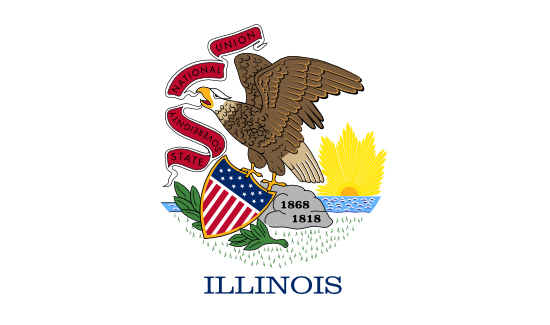
Illinois
- Statehood Year:
- 1818
- Capital:
- Springfield
- Largest Cities:
- Chicago, Aurora, Naperville
- Abbreviation:
- IL
Illinois is a state in the Midwest region of the United States, known for the Great Lakes shoreline, prairie lands, and urban Chicago. It has a population of 12,778,100, making it the 6th most populated state in the country. The capital city is Springfield. Illinois has a diverse economy with financial services and manufacturing strength.